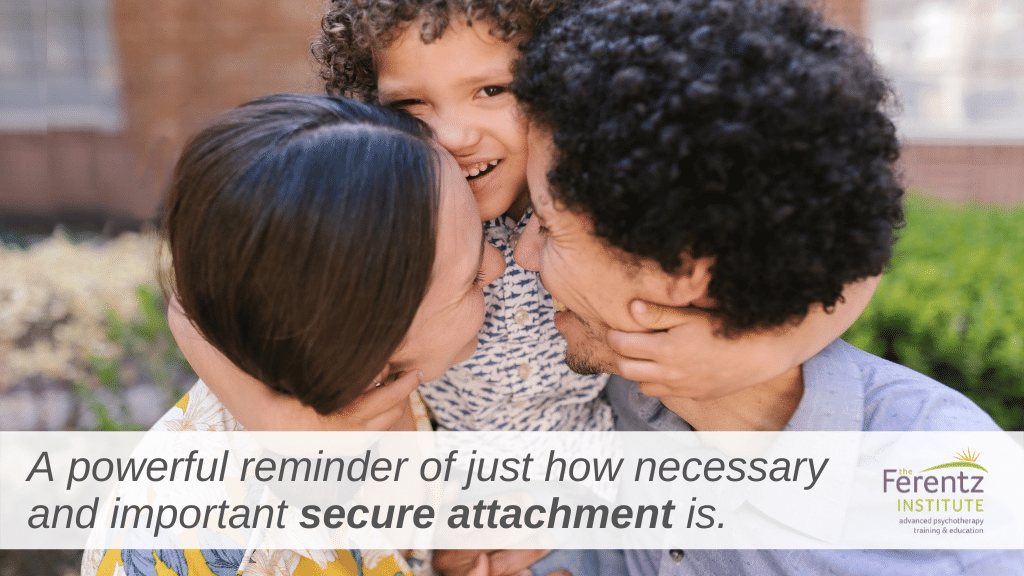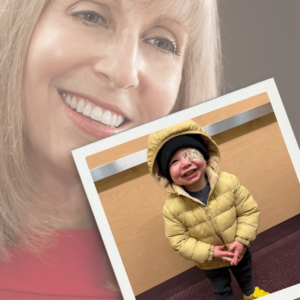
Last week, Levi, my beautiful 18-month-old grandson had eye surgery. It was a great success, and he recovered incredibly well. I had the privilege of helping my son and daughter-in-law before and after the surgery and again I witnessed, firsthand, how love, secure attachment, and comfort can significantly mitigate traumatic events. Every scary aspect of Levi’s prep, surgery, and post-surgical recovery was accompanied by hugs, words of validation and reassurance, and the grounding that comes from a calm, loving presence.
I’ve spent so much of my career educating both clients and colleagues about the reverberating impact of attachment in the formative years of a child’s life. Working with adults who did not get consistent, safe, predictable, secure attachment, I’ve seen the toll it takes on trust, intimacy, self-esteem, affect regulation, the ability to engage in self-care, and the ability to lead from wisdom and self-compassion. For Levi, there were so many foreign and overwhelming aspects of his medical experience, and it was so clear that his ability to come through it completely emotionally intact had everything to do with being tethered to a loving and stable family who could soothe his fears and keep him safely grounded.

Lisa’s grandson, Levi
It was a powerful reminder of just how necessary and important secure attachment is, particularly when we feel threatened, afraid, or forced to face the unknown. I began thinking about the narratives I’ve heard from countless clients who were mistreated, abused, neglected, or traumatized in childhood. The fact that they did not have a loving, safe presence to help navigate and mitigate their experiences made those events even more terrifying. Being alone with one’s pain dramatically increases the negative sequelae and can make it even harder to resolve the experience. When we assess for trauma, we must remember to ask about the additional components of isolation and being denied resources for comfort.
The need for secure attachment doesn’t end in childhood.
The fact that Levi needed eye surgery had the potential to be traumatic for his parents and me as well. The love, support, comfort, and reassurance we gave to each other enabled us to be strong, calm, and fully present. The need for secure attachment doesn’t end in childhood. We all continue to need and deserve the safe and connected feelings that come from relationships with emotionally available people who are genuinely loving, supportive, and compassionate. The beauty of the therapeutic relationship is that our clients can begin to experience genuine healing when they accept the secure attachment that we can offer them.
Recommended Reading:
The Power of Attachment: How to Create Deep and Lasting Intimate Relationships, by Diane Poole Heller and Peter Levine
Understanding Attachment Injuries in Children and How to Help, by Catherine Young
The Connected Parent: Real Life Strategies for Building Trust and Attachment, by Lisa Qualls

